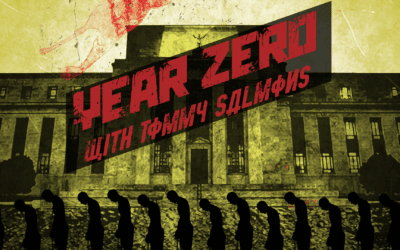When the news broke about white supremacists inciting violence over the removal of the statue of Robert E. Lee in Charlottesville, Virginia, I was reading one of the most thought-provoking books on human nature that I’ve ever read—namely, the New York Times bestseller, Sapiens: A Brief History of Humankind, by Yuval Noah Harari.
One can’t have a fragile ego to read the book, for it doesn’t speak highly of Homo sapiens. But it does explain why modern humans have such violent disagreements over statues and other totems and the ideas they represent.
It wasn’t always this way.
Throughout most of human history, the natural limit on the size of social organizations was about 150 people. Tribes and clans didn’t exceed this size because the social glue that kept people together was their familiarity with each other. After all, it’s difficult to know and trust everyone when a grouping is larger than 150.
This limit held until the recent development (recent in evolutionary time) of language and abstract thinking. This development enabled humans to greatly exceed the natural limit and to form villages, city states, kingdoms, nations, and empires. The glue of personal relations was replaced by the abstract glues of religion, mythology, laws, manifestos, constitutions, economic theories, and flags and other totems. Strangers could come together under such symbols and beliefs to work cooperatively toward common goals and mutual defense.
Of course they also could come together to subjugate and kill those with different symbols and beliefs. In fact, humans began attacking each other over ideas with as much fervor as they once did over food, territory, and plunder.
A sampling: Thousands of years ago, the new idea of monotheism in the Old Testament, coupled with the idea that the Israelites were the chosen people, resulted in bloodshed by the Israelites and against the Israelites. Christ was later crucified for departing from the established idea and saying he was the savior. Polytheist Romans fed Christians to the lions before Constantine declared Christianity as the religion of the Roman Empire. Christians burned heretics at the stake over ideas they didn’t like. The idea of a master race led National Socialists to come up with the Final Solution. Bolsheviks fought White Russians and starved their own people over ideas about class and economics. Communists and capitalists continued the fight through direct conflict, proxy wars and the Cold War. Sunnis and Shia continue to kill to each other over their respective ideas about Mohammed.
And so it goes, ad nausea, with humans continuing to attack each other over political ideology and religion—that is, over different ideas and dogmas.
Which takes us back to the statue of Robert E. Lee. The statue is a tangible object, but it also stands for abstract ideas.
For some, it stands for valor, honor, and states’ rights. For others, it stands for enslavement, white privilege, and rebellion. Still others see it as a racial marker; that is, as a rallying cry for white supremacists or a rallying cry for those who still feel victimized by racism but have racist attitudes about whites. Historians see it simply as an historical artifact, one that tells a complicated story about the nation’s history.
I’m with the historians. Let the statue stand, but with interpretative signage that explains the competing ideas that led to a half-million Americans being slaughtered by their fellow Americans. One of the ideas from the Confederate side was that someone could be a good Christian and still own other human beings—an obvious intellectual contradiction.
But, admittedly, printing that contradiction on an interpretative sign for all to see would trigger even more outrage, albeit from a different group: those who can’t tolerate any criticism of their religion.
As the book Sapiens makes clear, most of the cherished beliefs and ideas and myths and totems that hold together a social grouping are full of inherent contradictions, whether the grouping is a nation, a religion, a political ideology, a political party, or a large organization like Google. This holds true for the dialectic of communism, the market philosophy of Adam Smith, the Declaration of Independence and Constitution, the political beliefs of contemporary conservatives and liberals, the policies of Republicans and Democrats, the echo chambers of talk radio and NPR, the worship of racial and gender diversity at Google, and, especially, my libertarian beliefs. Each has flaws in logic, each doesn’t tell the whole story, each ignores countervailing facts, and each requires some degree of faith and suspension of reality.
Take my boyhood religion of Catholicism, which teaches that the pope is infallible, a teaching that has been proven wrong repeatedly throughout history. Cognitive dissonance is necessary for someone to ignore this contradiction, just as mental gymnastics are required to ignore other contradictions inherent in not only Catholicism but also in other religions, political ideologies, and economic theories.
To summarize: Ideas are the glue that holds together societies, nations, religions, and other large social groupings. And cognitive dissonance protects the glue. Without the protection of cognitive dissonance, the glue melts under the heat lamp of facts and reality, and social adhesion begins to come apart.
We’re watching this happen to the USA.






























